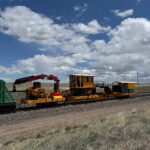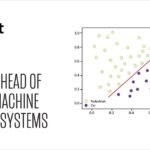The empennage is an important part of modern-day airplanes. Also known as the tail assembly, it provides stabilization as well as pitch and yaw control. Without a tail, most airplanes would be too unstable to fly. Airplanes would essentially “swing” to the left and right. The empennage prevents unwanted movement such as this so that airplanes can fly straight. Below are six facts about empennages.
#1) Consists of Multiple Parts
Empennages consist of multiple parts, including a horizontal stabilizer, elevators, vertical stabilizer and rudder. The horizontal stabilizer prevents pitch instability. The elevators control the airplane’s pitch. The vertical stabilizer prevents unwanted yawing. The rudder allows pilots to control the airplane’s yaw.
#2) Some Empennages Have Trim Tabs
In addition to the parts listed above, some empennages have trim tabs. Trim tabs are adjustable, hinge-like plates. As the name suggests, they are used to control the airplane’s trim. They work by countering drag on the airplane’s surfaces, thereby reducing the need for manual yoke or rudder input. With the right trim settings, airplanes will maintain stable flight — even with little or no yoke or rudder input.
#3) Available in Composite Materials
Aircraft manufacturers use a variety of materials to make empennages, one of the most common being composites. Composite materials are characterized by a composition of fiber and resin. They feature reinforcing fibers, such as carbon fiber or fiberglass, mixed with a resin. When compared to traditional materials like aluminum and steel, composite materials typically have a higher strength-to-weight ratio, making them ideal for aircraft empennages, fuselages and wings.
#4) Available in Different Styles
You can also find empennages in different styles, such as T-tail, V-tail and H-tail. T-tail empennages feature the horizontal stabilizer above the vertical stabilizer, resulting in a T-like shape. V-tail empennages don’t have a horizontal or vertical stabilizer. Instead, they feature two angled stabilizers, which reduces drag but increases complexity. H-tail empennages feature two side-by-side vertical stabilizers connected by a single horizontal stabilizer.
#5) Fly-By-Wire Controls
The empennage can typically be controlled via fly-by-wire. Fly-by-wire controls allow pilots to make adjustments to control surfaces, including those on the empennage, using a yoke, stick or pedal. In the past, most airplanes used traditional mechanical connections, which were more laborious and difficult to use.
#6) Not All Airplanes Have an Empennage
You might be surprised to learn that not all airplanes have an empennage. While they are found on most commercial and private airplanes, there are a few airplanes that lack an empennage. The Northrop B-2 Spirit military jet, for instance, doesn’t have an empennage. Instead, it features delta wings to mimic the stability provided by an empennage.



























